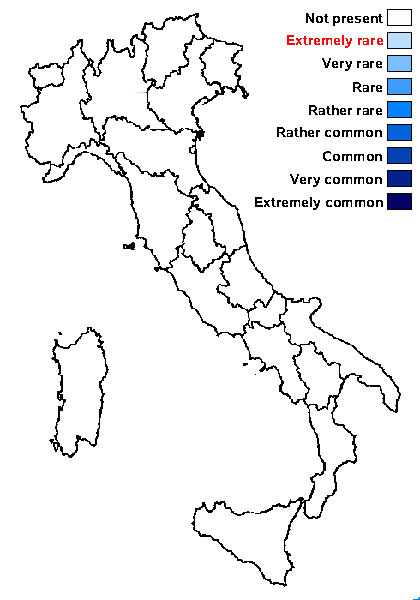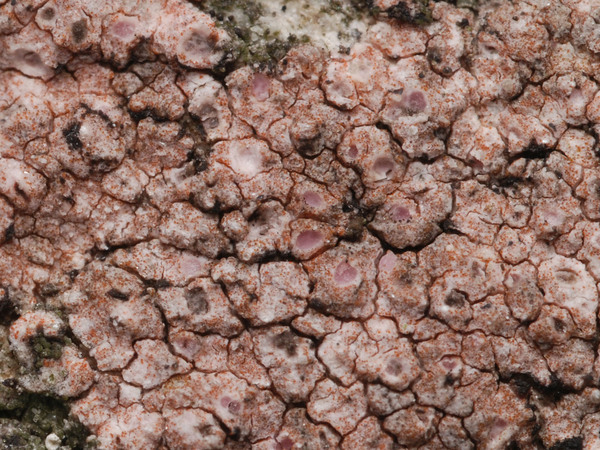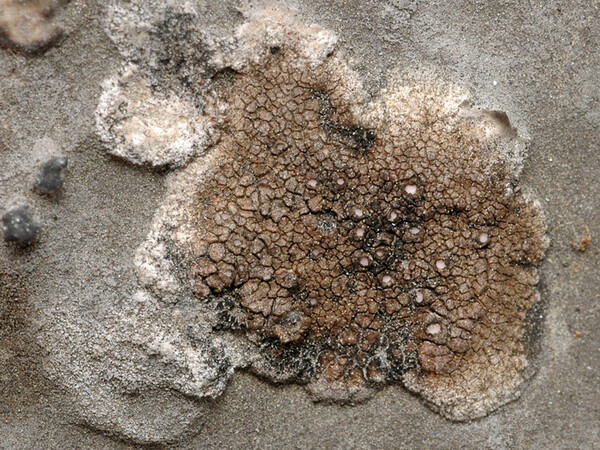Hymenelia rhodopis (Sommerf.) Lutzoni
in Lutzoni & Brodo, Syst. Bot., 20, 3: 250, 1995. Basionym: Lecanora acharii var. rhodopis Sommerf. - Suppl. Fl. Lapp. : 89, 1826
Synonyms: Ionaspis rhodopis (Sommerf.) Blomb. & Forssell
Distribution:
Description: Thallus crustose, episubstratic, rimose to areolate, the areoles mostly concave, whitish to pale grey, scabrid, often appearing pulverulent-pruinose, often delimited by a glossy black prothalline line. Apothecia 0.4-0.6 mm across, immersed in thalline warts and not surrounded by a circular crack, at first almost perithecia like, with an initially punctiform, later expanded, slightly concave, pink disc and a rather thick, persistent, pale grey margin. Proper exciple colourless; epithecium colourless, K-, N-; hymenium colourless, 110-150 µm high, I+ yellowish to brownish; paraphyses simple or sparingly branched, submoniliform in upper part, the apical cells slightly swollen; hypothecium colourless. Asci 8-spored, cylindrical-clavate, the outer coat I+ blue, but the inner walls and apical dome K/I-. Ascospores 1-celled, hyaline, ellipsoid, (13-)14-17(-22) x 8-12 µm. Photobiont trentepohlioid, the cells 10-18 µm wide. Spot tests: thallus K-, C-, KC-, P-, UV-. Chemistry: without lichen substances.Note: on calcareous stones; widespread in the Holarctic region, but not always distinguished from H. epulotica (with an endolithic thallus), with several records from the Eastern Alps, where it appears to be fairly common, outside the Italian territory: to be looked for in the Italian Alps.
Growth form: Crustose
Substrata: rocks
Photobiont: Trentepohlia
Reproductive strategy: mainly sexual

Predictive model
Growth form: Crustose
Substrata: rocks
Photobiont: Trentepohlia
Reproductive strategy: mainly sexual

Predictive model
 INDEX FUNGORUM
INDEX FUNGORUM
 GBIF
GBIF



